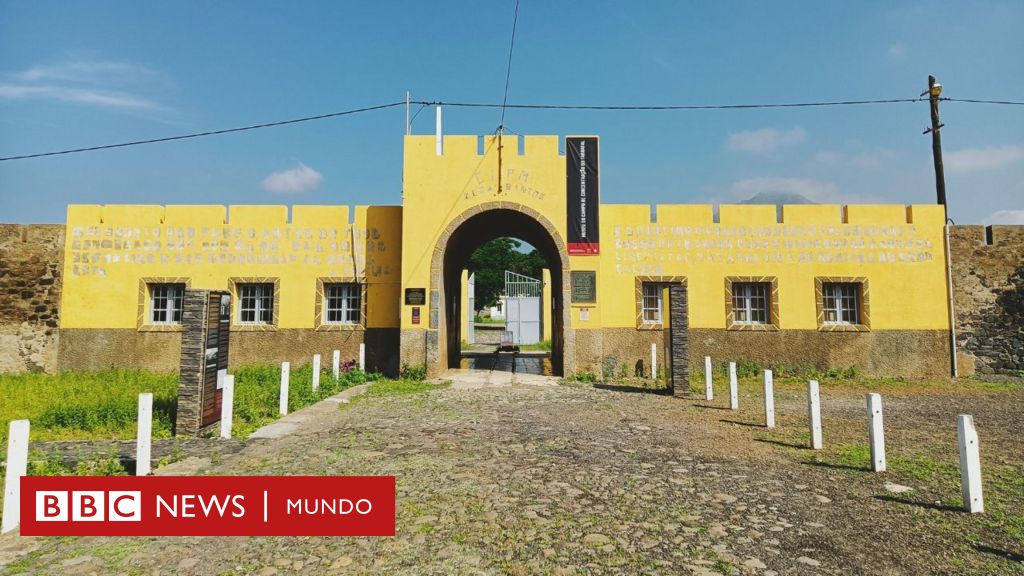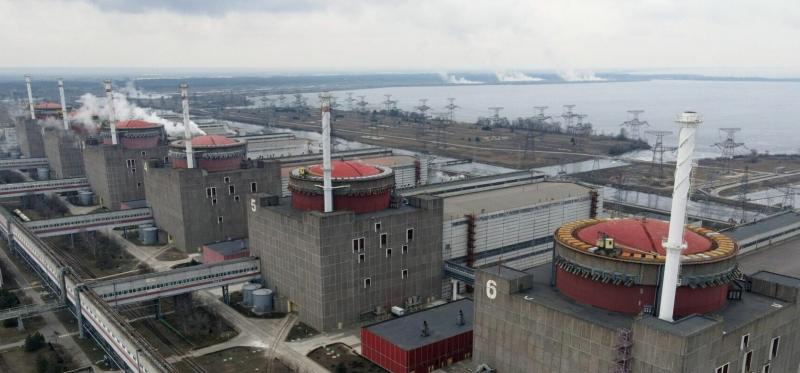Image copyright Cape Verde Cultural Heritage Institute
Photo caption, Cape Verde was a Portuguese colony until 1975, the year in which it gained independence.Item information
Edmundo Pedro (1918-2018), entered the Tarrafal concentration camp, on the island of Santiago, in Cape Verde, at the age of 17.
He was part of the first group of prisoners who went to build the camp, which at the time had little more than tents. It was October 1936.
Edmundo Pedro had been arrested eight months earlier for leading the Youth of the Communist Party and embarked towards Tarrafal without knowing very well where he was going.
His father, Gabriel Pedro, was also an opponent of the government and traveled with him. Neither of them knew at the time how long they would spend in exile. They returned 10 years later.
The Cape Verde Penal Colony, the official name of the Tarrafal camp, was created in April 1936, in the context of several social protests that had begun with the general strike of January 18, 1934 in Portugal, in which there were numerous arrests. .
The regime created a concentration camp in one of its colonies and deported there the prisoners it considered most ideologically dangerous.
“The first phase of the camp mainly housed political prisoners opposed to the regime: anarcho-syndicalists, communists and socialists,” explains historian Isabel Flunser Pimentel.
“It looked like the camps, not extermination camps, but the concentration camps that existed in Nazi Germany or Franco’s Spain. The objective was not to kill the prisoners, but to neutralize them, lock them up as far away as possible and let them die. “he adds.
At first it was just a field with canvas tents. “It was the prisoners themselves, subjected to forced labor, who built the different facilities,” says Nélida Brito, professor of Contemporary History at the University of Cape Verde.
340 prisoners passed through there, all Portuguese, in what was known as the “first phase” of the camp.
The conditions were terrible: in addition to the mistreatment and beatings, there was a shortage of food, lack of hygienic conditions (the “bathrooms” were five holes in the ground with cans inside), combined with the hostile climate of Cape Verde and the dangers of contracting malaria from mosquito bites due to lack of medical care.
So much so that Tarrafal began to be known as “the field of slow death.”
image copyrightAcervo/SIPA
Photo caption, The construction of the field, in the first decades of the 20th century.
Whoever today visits the Tarrafal camp, transformed into a Museum of the Resistance, can read, inscribed on the walls, the declaration of intentions of the doctor Esmeraldo Pais da Prata, who had to ensure the health of the prisoners: “I do not come here to cure , but to issue death certificates”.
“33 prisoners died between 1936 and 1954. Most of them from diseases such as malaria or diarrhea, as a result of the water they drank, which was not drinkable. But others from the mistreatment they suffered,” says Nélida Brito.
The worst punishment was the so-called “frying pan.” Created by the first director of the Tarrafal camp, Manual dos Reis, in 1937, it was a concrete “box” six meters long, three meters wide and with a small crack in the roof.
“Exposed to the intense sun of Cape Verde, the heat inside could reach 60ºC,” says the history teacher.
The “frying pan”
“When I was in the frying pan – with twelve other men – the moisture from my breath condensed on the walls where it ran. It doesn’t take much imagination to get an idea of what could happen when twelve men tried to breathe inside a box like that. , with the tropical sun warming the outside, and the evaporation of the breathed air running down the walls,” wrote Gilberto Oliveira, a prisoner of the camp, in the book Memória Viva do Tarrafal.
“The bodies were soaked, the air without oxygen was suffocating, the blood was pulsating in the head and the chest was oppressed in a maddening semi-asphyxiation. And to this we must add all that viscous humidity in which the putrefied acids of the can mixed. in which everyone relieved themselves. In short, a hole where men were treated worse than animals,” he writes.
Gabriel Pedro, father of Edmundo Pedro, was the prisoner who spent the longest time there: 135 days. His desperation was such that one day he tried to take his own life by cutting his wrists with a can. They found him in time to save his life.
Young Edmundo was locked in the frying pan for 70 days, after an escape attempt.
“You can’t imagine what that was like. The temperature inside reached almost 50 degrees. At night there was condensation so the humidity ran down the walls and we licked it. They took the water away from us. I can’t explain the degree of suffering,” he said in an interview with a local newspaper in 2017.
Image copyrightInstituto de Patrimônio Cultural de Cape Verde
Caption, View of the Tarrafal concentration camp, on the island of Santiago, Cape Verde.
Most of the prisoners ended up in the Tarrafal camp without any trial. “This is the case of Edmundo Pedro,” says historian Irene Flunser Pimentel. “He was there for 10 years and only when he returned to the metropolis was he tried and sentenced to a sentence of half a year, which, of course, he no longer served.”
In 1954, years after the Allied victory in World War II and some international pressure, the camp was closed.
However, in 1961, with the end of the overseas war and with the independence movements in the Portuguese colonies, the regime decided to open the field again.
The name was changed, it became Chão Bom Labor Camp and the “frying pan” was destroyed.
The second period of the field
In its place appears the “holandinha”, a cement construction, also precarious, but which was located inside another building, impossible to see from the outside.
In this second phase, the prisoners were not Portuguese anti-fascists, but members of the liberation movements of the African colonies.
“107 Angolans, 100 Guineans and 20 Cape Verdeans passed through there. In this second phase, there was not as much forced labor, especially because the camp was already built and they spent most of the time locked up there,” says Nélida Brito.
“A library was created that had three functions: that of a library, thanks to the sending of books, that of a school and that of a church. Furthermore, thanks to the complicity of some guards, [los presos] They got 3 radios. Conditions continued to be harsh (corporal punishment and unsanitary conditions continued), but there was none of the brutality of the first phase.”
image copyrightAcervo/SIPA
Caption, Image of the Cape Verde concentration camp with descriptions of the facilities.
The prisoners were separated by nationality and the guards did not allow them to mix, so that different political movements would not “feed” the others.
During the many years they were all there, the prisoners developed forms of resistance.
“Many did what they called academic improvement. Those who had more studies taught others, some only knew how to write their names. And this learning from each other was a way to survive and resist that oppression,” says Diana Andringa, journalist and author of the documentary “Memories of the Slow Death Camp.”
Recorded in 2009, on the 35th anniversary of the camp’s closure, the documentary shows the reunion of the surviving prisoners.
The useless evil
“It was very moving to experience that. Many did not even know each other, most had never returned there and sharing common memories was healing. They entered there in a different way, as victors, because what these Africans, imprisoned in the 60s, had in common with the Portuguese, imprisoned in the 1930s, it was anti-fascism and anti-colonialism.”
In the images there are stories of extreme cruelty. Of violence, beatings, stories of isolation in the “Holandinha” that ended in madness. But what impressed the journalist most was what she calls “useless evil.”
“Some were arrested with their parents and, when they arrived here, they were forced to undress. Many Angolans and Guineans preferred to be beaten rather than undress in front of their parents. That, in their cultures, is something that is not done. And this is where colonialism shows a total lack of respect for other people’s culture, and that is where it brutally attacks them,” says the journalist.
Image copyrightInstituto de Patrimônio Cultural de Cape Verde
Photo caption, Internal courtyard of the concentration camp.
“The families of the Guineans were told that they had died. And many had a funeral. The weight that this leaves on a family, the trauma of knowing later that a child was buried alive… I also remember the wife from a Portuguese anarchist, Mário Castelhano, who was returned a letter with the word ‘died’ written in red. This is how she found out that her husband had died. These are the brutalities that shocked me the most, because it is useless evil. It has no purpose, just to do more damage,” he says.
When the revolution occurred in Portugal on April 25, 1974, some prisoners heard the news on the radio. And they also received information from some guards who had a relationship with some prisoners.
“I have good news for you, something happened there,” a Cape Verdean guard secretly told them. But nothing happens there. At least until May 1.
That morning, a crowd gathered at the camp gate and demanded the release of the prisoners. The director of the camp, Dadinho Fontes, and some soldiers entered the camp, announced a regime change and freed the prisoners.
When they left, the prisoners were cheered by the crowd who carried them on their shoulders to the center of the city, in a party that lasted all day.
“The point is not that they tried to kill us slowly,” says Jaime Schofield, a Cape Verdean captured in 1967, at one point in the documentary. “The most important thing is that we reject that slow death. In Tarrafal we reinvent life, always!”
And remember that you can receive notifications in our app. Download the latest version and activate it.


